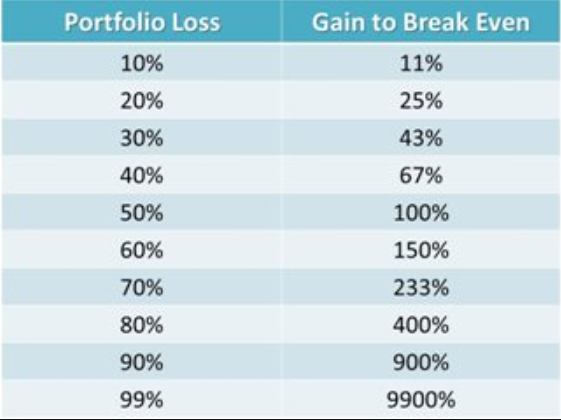The key to long-term survival and prosperity has a lot to do with the money management techniques incorporated into the technical system.Ed Seykota
This note includes the following topics:
- Position sizing
- The 1 percent Rule
- Dangers of tight stop losses
Position sizing
- How many stocks to buy?
- Professionals focus on maximum drawdowns, not maximum returns

The 1 percent Rule
- Never risk more than 1 percent per trade
- Even if you are wrong 10 times in a row, your account will be down only 10%
- 1% risk does NOT mean to buy stocks worth 1% only of your total account
Trading Account: $100,000
Max Risk per trade: 1% = $1,000
-----------------------------------
Stock Price: $100/share
Initial stop loss (1R): 5% = $5
How many stocks to buy = $1,000 / $5 = 200 shares
Total cost: 200 shares x $100/share = $20,000
-----------------------------------
Position size = $20,000 / $100,000 = 20%
Hence 1% risk != 20% Position size
Dangers of tight stop losses
- With the max risk per trade being the same at 1%, a tighter stop loss is riskier
- A 3% stop loss: 33% position size
- A 5% stop loss: 20% position size
- Inverse relation
- If your stock is gapped down 20%, the account will face a 6.66% loss in a single trade
Trading Account: $100,000
Max Risk per trade: 1% = $1,000
-----------------------------------
Stock Price: $100/share
Initial stop loss (1R): 3% = $3
How many stocks to buy = $1,000 / $3 = 333.3 shares
Total cost: 333.3shares x $100/share = $33,333
Position size = $33,333 / $100,000 = 33%
----------------------------------
5% stop loss: 20% position size
3% stop loss: 33% position size
----------------------------------
# Imagine a 33% position size account having a 20% gap down
33 x .20 = 6.66% loss in a single trade
